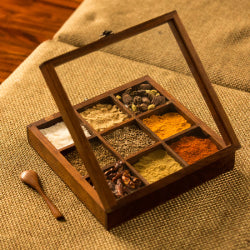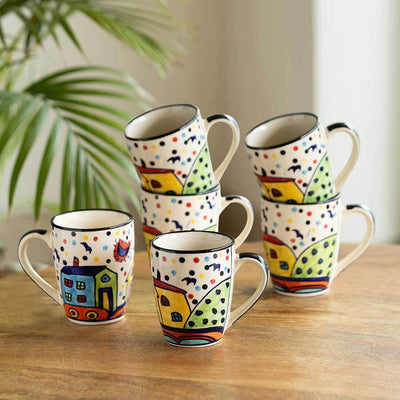Chairs Through History: Evolution of Seating
People are doing it all over the place. People do it all the time at home and at business. It's something you'll see people doing when waiting for the bus or eating at eateries. We are so used to seeing others do it that we don't even notice. It's the one activity that almost everyone does and that we all learn before we walk: sitting.
Taking a seat is such a routine action that we don't appear to think about why we do it. While humans have always sat on the ground, we discovered evidence dating back to the Neolithic period suggesting that humans opted to start lifting themselves above the earth.
Evolution of Seating
- Seats were typically three-legged stools or benches prior to the 12th century. They were simple, coarsely constructed, and solely functional.
- 12th-15th centuries: Seats were given backs and four legs, transforming them into chairs. Furniture, which was frequently carved, was influenced by Gothic styles. Cathedral chairs with a high back and a very straight back were common in the history of furniture design.
- 16th-17th centuries: Chairs grew more sophisticated, lighter, more comfortable, and beautiful as the Renaissance flourished. The importance of appearances has surpassed that of function. The church was no longer the exclusive patron of the arts; nobles also played a part. However, European rulers possessed the most power, particularly the French line of Louis XIII, XIV, and XV. Luxurious embellishments, veneers, costly fabrics, exotic wood, stones, gold, and silver were all introduced by Louis XIV.
- 18th century: Rococo forms, curving lines, floral decorations, and even greater ornamentation were introduced by monarchs. The middle and higher classes now had a variety of seating options, including stools for perching, dining chairs, side chairs, armchairs, and a low bench by the fire.
- 19th century: Following the French Revolution, the Napoleonic Empire replaced Rococo frippery with hefty, straight neoclassical lines. The Victorian era, with its lavish displays of wealth, took hold around the mid-century mark. Heavy textiles, such as velvet, in dark colours, such as crimson and green, became popular during this time period. The Federal movement, which had a colonial, classical aspect, was the American counterpart to this style.
- 20th century: Furniture design became more accessible to the general public, as it was no longer connected with sovereigns. Mission and Arts & Crafts styles marked the beginning of the century. The angular contours of the chairs were a protest to Victorian excesses and to industrialism. Then came art nouveau, modernism, art deco, and Bauhaus.
- Following WWII, midcentury modernism exploded. The chairs were light and svelte, with innovative materials like moulded plywood, plastic, and chrome.
History of the Chair – A Story to Sit and Enjoy
The history behind stylish seating dates back to Neolithic hamlet of Skara Brae in Scotland, which dates back to 3,200 BC. Archaeologists discovered homes with signs of domestication such as doors, beds, tables, and chairs. These stone benches demonstrate the first manifestations of our urge to rise above the ground.
In ancient Egypt, three-legged, four-legged, and even folding stools quickly gave way to seats with backs and armrests. In the graves of Queen Hetepheres I and King Tutankhamen, ornate wooden armchairs with gold and silver inlay were discovered. Strong lines and beautiful detail, such as carved lotus blossoms and animal legs, characterise these armchairs.
Although the ancient Egyptians and Greeks utilised stools with an X-frame of diagonal cross braces, it was the ancient Romans who took it to the decorative heights that it is known for today. The curule chair has been reserved for monarchs, dignitaries, and other prominent political and religious figures for ages. Royal thrones and other ornately designed seats were emblems of power and authority in mediaeval Europe. Religious authorities frequently sat in faldstools, which are derived from Roman curule seats.
The ancient Roman curule was revived throughout the Renaissance, with distinct variants arising in different places. In Italy, the dantesca chair, which is upholstered in velvet or leather, and the Savonarola chair, which has a firm back and a loose seat cushion, became popular. During this time, three- or four-legged chairs, often known as stool chairs, became popular. Chairs, which had previously been reserved for royalty and other prominent figures, were now found in the homes of aristocratic and mercantile families.
Types of Chairs: Different Chairs & their Evolution
Baltimore Fancy Side Chair, Early 19th Century, United States
Neoclassicism ruled in the late 18th century, following the extravagance of the Baroque and Rococo periods. Mahogany from the Americas became more widely available, and it was utilised to make exquisite chairs and other furniture. Although the majority of Neoclassical designs are inspired by the straight lines of ancient Greek and Roman architecture, the curucle and klismos chairs make a comeback.
Charles Rennie Mackintosh's Hill House Chairs, Scotland, 1903.
The Victorian era, like the Neoclassical period before it, drew inspiration from the past, this time through revivals of Gothic, Renaissance, and Rococo forms. Designers of the Arts and Crafts movement, dissatisfied with the extravagance of these forms, returned to clean lines and geometric shapes. In both his architecture and furniture, Charles Rennie Mackintosh used exaggerated heights and rectilinear patterns to dramatic effect.
Josef Hoffmann's Kubus Chair, 1910, Austria
Josef Hoffman was also a big fan of straight lines and geometric shapes, and he used the square and cube in a lot of his furniture designs. For a luxury effect, Hoffman frequently paired linear patterns with rich materials.
Marcel Breuer's Wassily Chair, 1925, Germany
After World War I, modernism took hold, and designers began developing furniture for mass production. Modern furniture is harsh, simple, and industrial in comparison to earlier forms. Designers used tubular steel, commonly coated with chrome, and bent plywood to produce inexpensive and lightweight furniture, eliminating many of the joints required in more traditional pieces. Wassily Chair by Marcel Breuer is a wonderful example of a chair pared down to its essentials. The tubular steel structure is bolted together with no welding, and the body is cradled by Eisengarn fabric slings.
Charles and Ray Eames' Plastic Chairs, 1948, United States
Charles and Ray Eames built another renowned chair of the twentieth century that made use of a relatively new material: petroleum-based plastic. Their moulded plastic chairs, which were developed for mass manufacture, are still in use today.
Charles and Ray Eames designed the Eames Lounge Chair 670 in 1956.
The Eameses designed their renowned lounge chair and ottoman in 1956, combining comfort and luxury. It was also created with mass production in mind, using a method of bending plywood pioneered by Charles Eames and Eero Saarinen. The chair is made up of three components that are welded together and placed on a pedestal. As a consequence, you get a timeless, comfy chair that is still in high demand today.
Summing Up
In every living area or room, importance of chairs is well known. Rather than being merely decorative, they are extremely beneficial to the elderly and those who work from home in a variety of ways. ExclusiveLane handicraft store offers a variety of wooden chair styles, including armchairs, cane chairs and dining chairs, in a variety of materials, including Sheesham wood, cane materials, and more.






Leave a comment